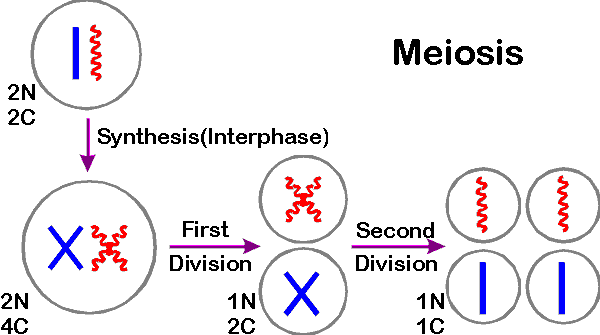A cell enters in meiosis after interphase with 20 picogram DNA. Why is it said that only one-fourth DNA will be present in each gamete produced after meiosis (when we know that the chromosome number is just halved)?
1 Answer
Each gamete of the species may carry about one fourth of the original amount, i.e. 5 picogram.
Explanation:
A cell would enter in Meiosis after interphase i.e. G1, S, G2; thus division starts only when the DNA replication is over. Each chromosome shows two sister chromatids attached at centromere.
In meiosis I, homologous chromosomes would separate and would travel to opposite poles. Thus amount of DNA is halved as well as the chromosome number after meiosis I. But meiosis II will allow the sister chromatids of each chromosome to separate, thereby chromatin material is again halved.
We may say that in the beginning, the cell had 4 copies of each DNA molecule: two homologous chromosomes, each with two sister chromatids which obviously mean that four copies of same DNA molecule are available after interphase, i.e. before beginning of meiosis.
After meiosis I, each daughter cell receives two copies of each DNA molecule in the form of two sister chromatids in one chromosome. During meiosis II, the chromatids separate and each daughter cell receives only one copy of each DNA molecule.
In the following illustration two homologous chromosomes are represented in two different colours. You may follow the division to understand why chromosome number is halved but only one fourth DNA reaches each gamete.

